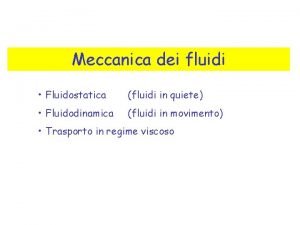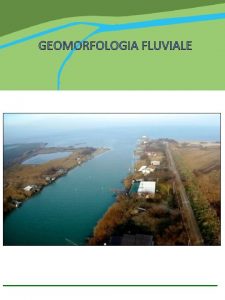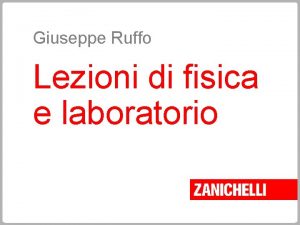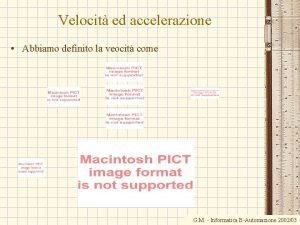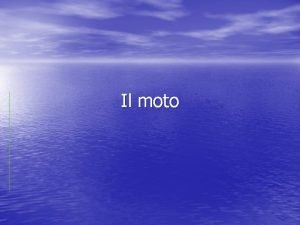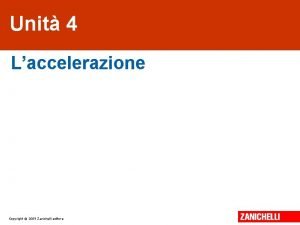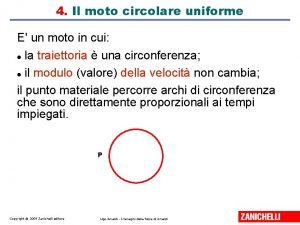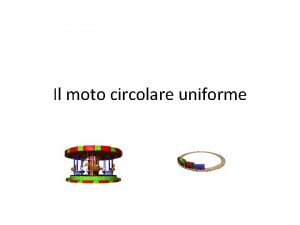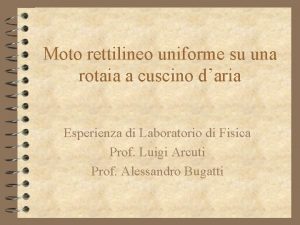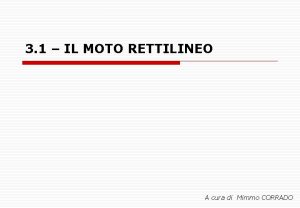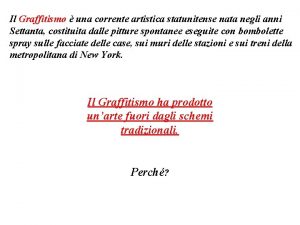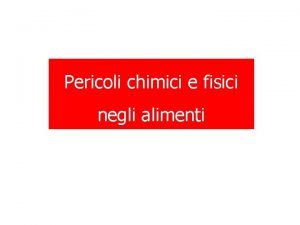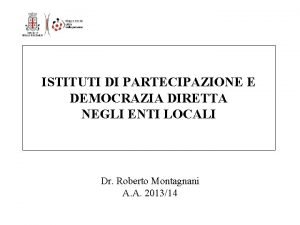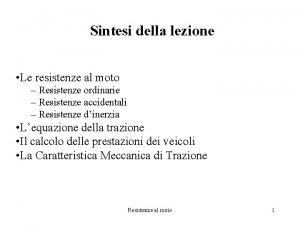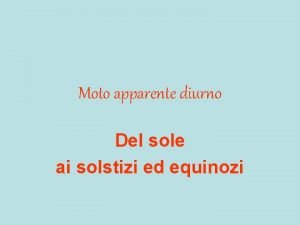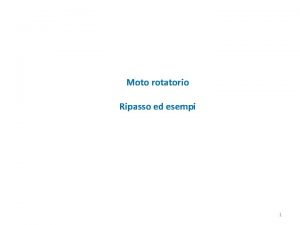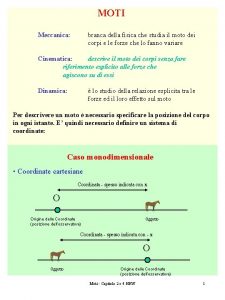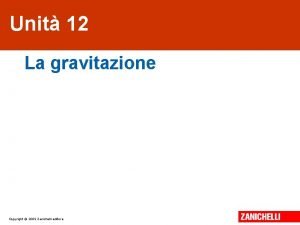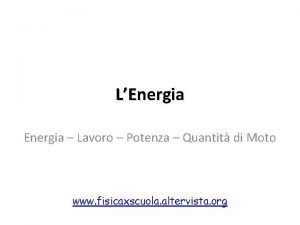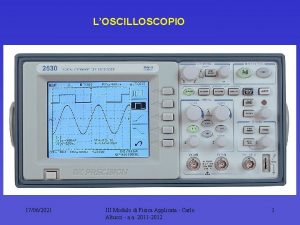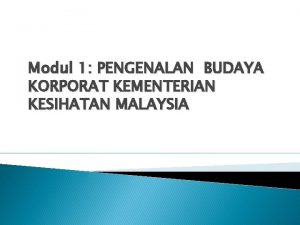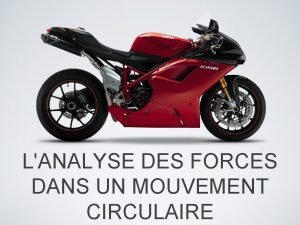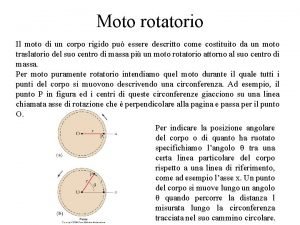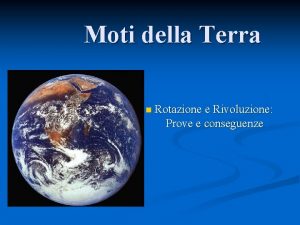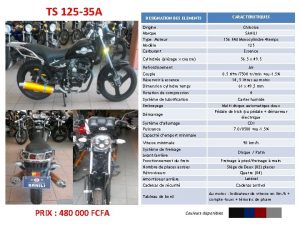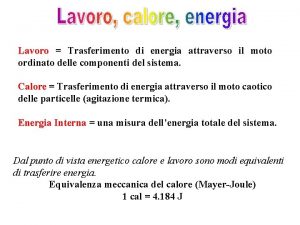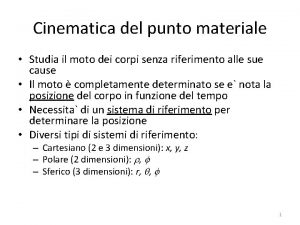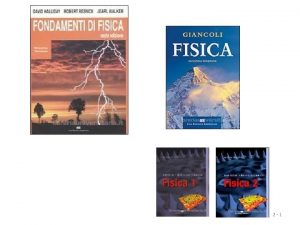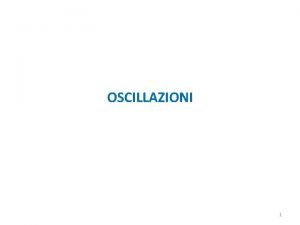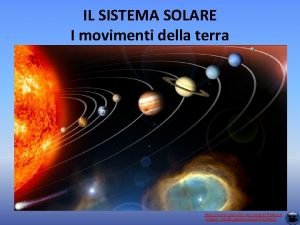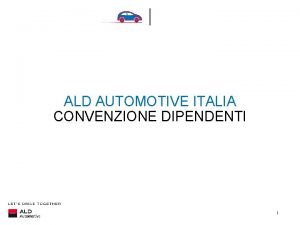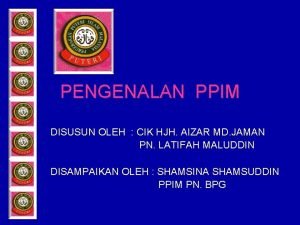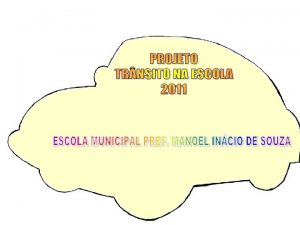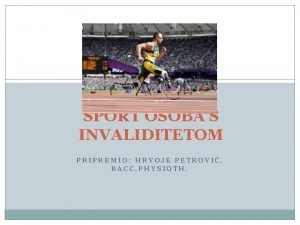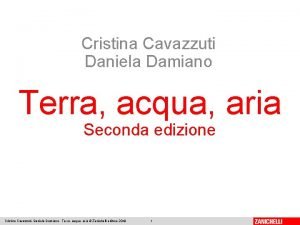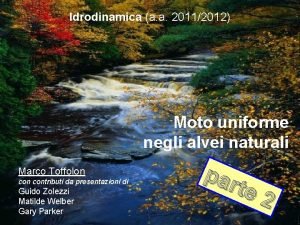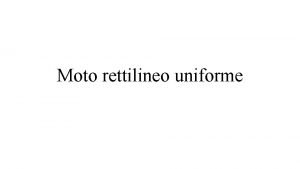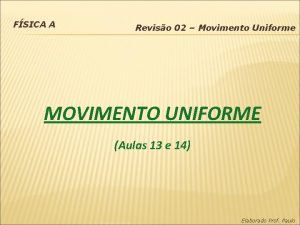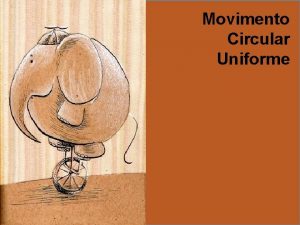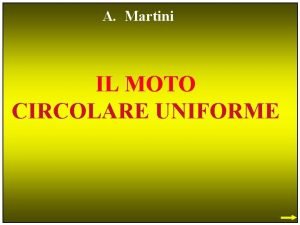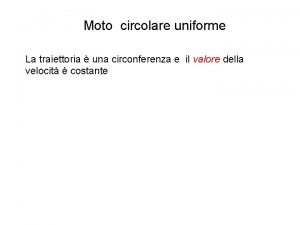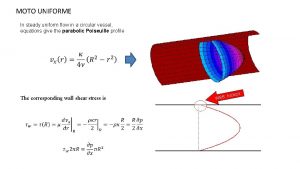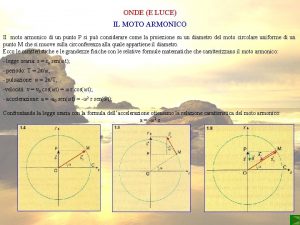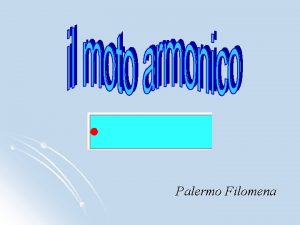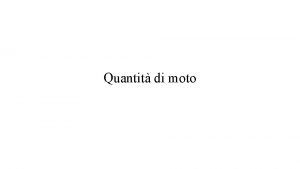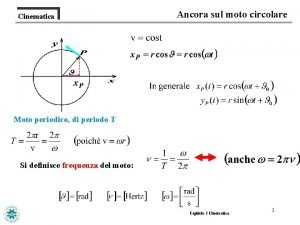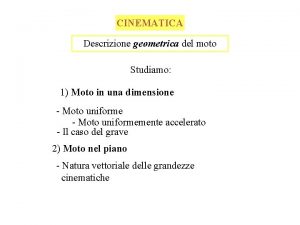Idrodinamica a a 20112012 Moto uniforme negli alvei





























































- Slides: 61

Idrodinamica (a. a. 2011/2012) Moto uniforme negli alvei naturali Marco Toffolon contributi da presentazioni di Guido Zolezzi Matilde Welber Gary Parker

Contatti Marco Toffolon email: marco. toffolon@ing. unitn. it Laboratorio Didattico di Modellistica Idrodinamica (2° piano, corridoio centrale) tel. : 0461 28 2480

Moto uniforme: introduzione

Introduzione Moto uniforme: cosa significa? perché è importante? uniforme: «uguale» ovunque quali condizioni devono essere soddisfatte? quali sono i limiti di questa definizione? utilizzo: scala delle portate (principalmente) nota la profondità stima della portata (locale) o viceversa

Equazioni 1 D (De Saint Venant) Equazione di continuità (conservazione della massa) Equazione di bilancio della quantità di moto (2° principio della dinamica) (con sistema di riferimento inclinato)

Equazioni Termine d’attrito Moto uniforme Raggio idraulico Bilancio di forze all’equilibrio Velocità d’attrito Relazioni (generali) di moto uniforme

Chiusura Moto uniforme Problema della chiusura: definire un legame tra tensioni e velocità Coefficiente di Chézy (adimensionale) alveo rettangolare “largo”

Formule di resistenza Moto turbolento pienamente sviluppato (Re>105) Coefficiente di Chézy (adimensionale) “scabro” Coefficiente di Chézy (dimensionale) Coefficiente di Gauckler-Strickler (dimensionale) Alveo rettangolare largo “liscio”

Confronti con moto nei tubi Darcy-Weisbach Chiusura Stima coefficiente di resistenza Colebrook-White diagramma di Moody Chézy

Resistenza nei canali Colebrook-White (tubazioni) Canale a sezione circolare in regime liscio Canale a sezione circolare in regime scabro Canale di forma regolare in regime liscio Canale di forma regolare in regime scabro Formula di Marchi (1961) per sezioni di forma regolare fattore di forma per sezioni rettangolari larghe

Variabili Problema idraulico: stima della portata Problema semplificato (alveo rettangolare largo): 5 variabili Note 4 grandezze, la quinta può essere determinata In generale: 5 «variabili» : • portata Q • pendenza if • livello idrico z • geometria della sezione (~larghezza) • scabrezza Ch (~diametro caratteristico dei sedimenti)

Problema di progetto • Determinare la profondità richiesta per il deflusso in moto uniforme della portata Q in un canale di larghezza b con pareti in cemento non perfettamente lisciate. • (Determinare il coefficiente m della scala di deflusso) • Dati: Q = 10 m 3/s b=4 m coefficiente di Manning if = 0. 001 n = 1/ks [s m-1/3] scabrezza cemento tabella

Portata negli alvei naturali

ALVEI NATURALI • Geometria irregolare • Variazione di scabrezza lungo il contorno • Come determinare la scala di deflusso e in generale le proprietà idrauliche f(Y) della sezione?

Adige, Trento, ponte S. Lorenzo, 24 gennaio 2002 ~ 100 m³/s B = 75 m Y=2 m Corso di Idrodinamica – Anno 2009

Adige, Trento, ponte S. Lorenzo, 26 novembre 2002 ~ 1400 m³/s B = 100 m Y=6 m Corso di Idrodinamica – Anno 2009

Adige, Trento, ponte S. Giorgio, 24 gennaio 2002 ~ 100 m³/s Corso di Idrodinamica – Anno 2009

Adige, Trento, ponte S. Giorgio, 26 novembre 2002 ~ 1400 m³/s Corso di Idrodinamica – Anno 2009

Adige a Trento, ponte S. Lorenzo Scala di deflusso scala idrometrica sezione rettangolare

Adige, Trento, Lungadige G. Leopardi Corso di Idrodinamica – Anno 2009

Adige, Trento Nord, zona depuratore …ma quanto vale il coefficiente di scabrezza per l’Adige? ? Corso di Idrodinamica – Anno 2009

Resistenze negli alvei naturali

Resistenze negli alvei naturali VAL RIDANNA, ALTO ADIGE VAL PASSIRIA, ALTO ADIGE

Resistenze granulometria grossolana granulometria fine RESISTENZA DI GRANO + RESISTENZA DI FORMA ESEMPI Sforzo al fondo maggiore

Granulometria < − 8 − 6 to − 8 Intervallo dimensionale (metrico) > 256 mm 64– 256 mm Classi granulometriche (Wentworth) Blocchi Ciottoli − 5 to − 6 32– 64 mm Ghiaia molto grossa − 4 to − 5 − 3 to − 4 − 2 to − 3 − 1 to − 2 16– 32 mm 8– 16 mm 4– 8 mm 2– 4 mm Ghiaia grossa Ghiaia media Ghiaia fine Ghiaia molto fine 0 to − 1 1– 2 mm Sabbia molto grossa 1 to 0 2 to 1 3 to 2 4 to 3 ½– 1 mm ¼–½ mm 125– 250 µm 62. 5– 125 µm Sabbia grossa Sabbia media Sabbia fine Sabbia molto fine 8 to 4 3. 90625– 62. 5 µm Silt o Limo >8 < 3. 90625 µm Argilla Scala φ ghiaia (gravel) sabbia (sand)

Granulometria Fiume Tevere monte valle

Granulometria Fiume Tagliamento superficiale (Wolman count) sabbia ghiaia sotto lo strato di corazzamento (vagli)

Riferimenti bibliografici http: //vtchl. uiuc. edu/people/parkerg/

RESISTANCE RELATIONS FOR HYDRAULICALLY ROUGH FLOW Keulegan (1938) formulation: where = 0. 4 denotes the dimensionless Karman constant and as = a roughness height characterizing the bumpiness of the bed [L]. notazione Manning-Strickler formulation: where r is a dimensionless constant between 8 and 9. Parker (1991) suggested a value of r of 8. 1 for gravel-bed streams. Roughness height over a flat bed (no bedforms): where Ds 90 denotes the surface sediment size such that 90 percent of the surface material is finer, and nk is a dimensionless number between 1. 5 and 3. For example, Kamphuis (1974) evaluated nk as equal to 2.

COMPARISION OF KEULEGAN AND MANNING-STRICKLER RELATIONS r = 8. 1 Note that Ch does not vary strongly with depth. It is often approximated as a constant in broadbrush calculations.

Ricostruzione di una relazione per il coefficiente di Gauckler-Strickler Formula empirica: Parker (1991) Kamphuis (1974) Strickler (1923): Meyer-Peter & Müller (1948): diametro passante 90% dei sedimenti

SKIN FRICTION AND FORM DRAG: THE CONCEPTS «resistenza di grano» resistenza di forma The drag force acting on a body can be decomposed into skin friction and form drag. The former is generated by the viscous shear stress acting tangentially to the body. The latter is generated by the normal stress (mostly pressure) acting on a body. The Newtonian constitutive relation for water is Here ij denotes the stress acting in the jth direction on a face normal to the ith direction, p denotes the pressure, ij denotes the Kronecker delta ( = 1 if i = j and 0 if i j), ui = (u 1, u 2, u 3) denotes the velocity vector and xi = (x 1, x 2, x 3) denotes the position vector. The drag force Di on a body is given as where ji is evaluated at the surface of the body, ni denotes a local unit vector outward normal to the surface of the body, and d. S denotes an infinitesimal element of surface area.

SKIN FRICTION AND FORM DRAG: THE CONCEPTS contd. The drag force Di can be decomposed into a component due to skin friction Dsi and a component due to form drag Dfi as follows: Drag due to skin friction consists of that part of the drag that pulls the surface of the body tangentially. Form drag consists of that part of the drag that pushes the body in normally. Only the former is thought to directly contribute to sediment transport. Now in the diagrams below let and denote the skin friction and form drag forces on the area element d. S, denote a unit tangential vector to the surface in the x direction and denote a unit vector normal to the surface.

SKIN FRICTION AND FORM DRAG: THE CONCEPTS contd. Let D denote the drag force in the flow direction and nx denote the component of the unit outward normal vector to the surface in the flow direction. At sufficiently high Reynolds number, the drag on a streamlined body is mostly skin friction. The drag on a blunt body behind which flow separation occurs is mostly form drag. (The pressure in the separation bubble equilibrates with the low pressure at the point of separation. )

EINSTEIN DECOMPOSITION Einstein (1950); Einstein and Barbarossa (1952) When bedforms are not present, all of the drag on the bed is skin friction. This tangential drag force acts to pull the sediment along. When bedforms such as dunes are present, part of the drag is form drag associated with (most prominently) flow separation behind the dunes. Since this form drag is composed of stress that acts normal to the bed surface, it does not contribute directly to the motion of bed grains. As a result it is usually subtracted out in performing bedload calculations.

RELATIONS FOR HYDRAULIC RESISTANCE IN RIVERS Sediment transport often creates bedforms such as dunes. These bedforms are accompanied by form drag, and so reduce the ability of the flow to transport sediment. Dunes in the Mississippi River, New Orleans, USA Image from LUMCON web page: http: //weather. lumcon. edu/weatherdata/audubon/map. html Dunes on an exposed point bar in the meandering Fly River, Papua New Guinea

EINSTEIN DECOMPOSITION contd. Consider an equilibrium (normal) flow over a bed with mean streamwise slope if that is covered with bedforms. The flow has average depth Y and velocity U averaged over depth and the bedforms. The boundary shear stress averaged over the bedforms is given by the normal flow relation

EINSTEIN DECOMPOSITION contd. Now smooth out the bedforms, “glue” the sediment to the bed so it remains flat but offers the same microscopic roughness as the case with bedforms, and run a flow over it with the same mean velocity U and bed slope S. In the absence of the bedforms, the resistance is skin friction only. Due to the absence of bedforms the skin friction coefficient Cfs and the flow depth Hs should be less than the corresponding values with bedforms. Skin friction + form drag Skin friction only The difference between the two characterizes form drag.

EINSTEIN DECOMPOSITION contd. 0 f = 0 - 0 s = mean bed shear stress due to form drag of bedforms Cff = Cf – Cfs = friction coefficient associated with form drag Yf = Y – Ys = mean depth associated with form drag Skin friction + form drag Skin friction only The difference between the two characterizes form drag.

SKIN FRICTION Skin friction can be computed using the techniques developed in Chapter 5; where = 0. 4 and r = 8. 1, or Skin friction + form drag Skin friction only The difference between the two characterizes form drag.

FORM DRAG OF DUNES: EINSTEIN AND BARBAROSSA (1952) One of the first relations developed to predict the form drag in rivers in which dunes predominate is that of Einstein and Barbarossa (1952). They obtained an empirical form for Cff as a function of qs, where (numero di Shields) denotes the Shields number due to skin friction and D 35 is the grain size such that 35 percent of a bed surface sample is finer. Note that

FORM DRAG OF DUNES: ENGELUND AND HANSEN (1967) The total shear velocity u*, shear velocity due to skin friction u*s and shear velocity due to bedforms u*f, and the associated Shields numbers are defined as Engelund and Hansen (1967) determined the following empirical relation for lowerregime form drag due to dune resistance; or thus Note that bedforms are absent (skin friction only) when qs = q; bedforms are present when qs < q. The relation is designed to be used with the following skin friction predictor: Engelund and Hansen (1967) also present a form drag relation for upperregime bedforms (antidunes).

FORM DRAG OF DUNES: ENGELUND AND HANSEN (1967) contd. No form drag resistenza di forma resistenza di grano Engelund-Hansen

FORM DRAG OF DUNES: WRIGHT AND PARKER (2004) The form drag predictor of Engelund and Hansen (1967) tends to work well for sand-bed streams at laboratory scale. It also works well at small to medium field scale, i. e. in streams in which dunes give way to upper-regime plane bed before bankfull flow is achieved. It works rather poorly for large, low-slope sand-bed rivers, in which dunes are usually never washed out even at or above bankfull flow. Wright and Parker (2004) have modified it to accurately cover the entire range. This relation is designed to be used with the skin friction predictor where strat is a correction for flow stratification which can be set equal to unity in the absence of other information (see original reference).

COMPARISON OF FORM DRAG PREDICTORS AGAINST FIELD DATA The Niobrara and Middle Loup are small sand-bed streams. The Rio Grande is a middle-sized sand-bed stream. The Red, Atchafalaya and Mississippi Rivers are large sand-bed streams. Engelund and Hansen (1967) Wright and Parker (2004)

Morfologia degli alvei naturali


Configurazione planimetrica: • mono-pluricursale • struttura del campo di moto Alatna river, Alaska Nepal

FORME PLANIMETRICHE: meandri e braiding Fly river, Papua Tagliamento River, Italy

Meandri “siberiani” Waimakariri, NZ

MEANDRI Forma tipica in presenza di sponde coesive Scala temporale di erosione del fondo delle sponde diversa Corso di Idrodinamica – Anno 2009

ALVEI INTRECCIATI - “BRAIDING” Forma tipica quando il fiume non ha “costrizioni” laterali SCALE SPAZIALI DIVERSE PROCESSI SIMILI Tagliamento, Italia (larghezza ~ 1 km) Val Martello, Italia Brahmaputra, Bangladesh (larghezza ~ 0. 1 km) (larghezza ~ 10 km)

FORMA DELLA SEZIONE quanto è “largo” un fiume? di quanto spazio ha bisogno un fiume? che struttura ha il campo di moto? Drau River, Austria

CONFIGURAZIONE ALTIMETRICA quali forme di fondo si sviluppano ? quali effetti di “scavo” e “deposito” producono ? che struttura ha il campo di moto ?

BARRE FLUVIALI Naka river, JPN Toyotte pass, USA Val Passiria Congo river

BARRE FLUVIALI Barre “forzate” - Sviluppo forzato: curvatura, confluenze, manufatti - Forme “stazionarie” Barre “libere” - Sviluppo spontaneo (instabilità) - Forme “migranti”

BARRE ALTERNATE • Si formano spontaneamente in alvei “rettilinei” • Velocità di migrazione (m/d) << velocità della corrente • Problemi pratici: erosione localizzata, interazione con manufatti, navigazione • Secondo la ”bar theory” sono la “causa” dei meandri L • Sequenza longitudinale di zone di deposito e scavo alternate • Lunghezza L (5 -15) larghezza Bo • Massimo scavo profondità • Effetti topografici sul campo di moto

Classificazione Granulometria GROSSOLANA Granulometria FINE Materiale eterogeneo Materiale uniforme D 50 > 10 mm D 50 = 0. 1 - 1 mm Pendenza 1 - 0. 1 % Pendenza 0. 5 - 0. 01 % Trasporto di fondo Trasporto in sospensione Macroforme di fondo: BARRE Macroforme di fondo: DUNE Regime pluricursale Regime monocursale

TAGLIAMENTO vs ADIGE Verona Cornino Forgaria Trento Ponte di Pinzano ~ 4 m ~ 1000 m ~ 10 m

EFFETTI IDRODINAMICI COSA SUCCEDE AL PASSAGGIO DI UNA PIENA? Velocità corrente ↑ Celerità onda di piena ↑ Picco dell’onda di piena ↑

LA STRUTTURA DEL CAMPO DI MOTO U=f(Y) Y
 Resistenza idrodinamica unità di misura
Resistenza idrodinamica unità di misura Alvei fluviali
Alvei fluviali Antiphagozytär
Antiphagozytär Moto moto
Moto moto Velocita angolare
Velocita angolare Moto circolare uniforme mappa concettuale
Moto circolare uniforme mappa concettuale Moto rettilineo uniforme immagini
Moto rettilineo uniforme immagini Caduta dei gravi zanichelli
Caduta dei gravi zanichelli Moto circolare
Moto circolare Velocità tangenziale nel moto circolare uniforme
Velocità tangenziale nel moto circolare uniforme Esperimento rotaia a cuscino d'aria
Esperimento rotaia a cuscino d'aria Formule moto uniformemente accelerato
Formule moto uniformemente accelerato Moto uniformemente accelerato formule inverse
Moto uniformemente accelerato formule inverse Moto uniformemente accelerato
Moto uniformemente accelerato Una corrente artistica statunitense
Una corrente artistica statunitense Diritti umani tesina collegamenti
Diritti umani tesina collegamenti I pericoli fisici sono provocati da
I pericoli fisici sono provocati da Istituti di partecipazione negli enti locali
Istituti di partecipazione negli enti locali Iperidrosi notturna
Iperidrosi notturna Resistenza al moto
Resistenza al moto Slogan wirausaha
Slogan wirausaha A che domanda rispondono i complementi
A che domanda rispondono i complementi Suo-moto meaning
Suo-moto meaning Moto apparente diurno del sole
Moto apparente diurno del sole Il moto armonico di una molla
Il moto armonico di una molla Caduta dei gravi
Caduta dei gravi Solo on moto
Solo on moto Moto rotatorio
Moto rotatorio Fisica che studia il moto dei corpi
Fisica che studia il moto dei corpi La gravitazione zanichelli
La gravitazione zanichelli Motobox guzzi
Motobox guzzi Class mottos 2020
Class mottos 2020 Parte ciclo
Parte ciclo Moto gp live
Moto gp live Teorema dell'impulso
Teorema dell'impulso Moto relativo
Moto relativo Quantita di moto
Quantita di moto Principio di conservazione della quantità di moto
Principio di conservazione della quantità di moto Moto curvilineo vario
Moto curvilineo vario Il moto armonico di un puntino luminoso su un monitor
Il moto armonico di un puntino luminoso su un monitor Budaya korporat kkm
Budaya korporat kkm G gravitazionale
G gravitazionale Srinivas kotni
Srinivas kotni Force centripète moto
Force centripète moto Moto rotatorio
Moto rotatorio Prove della rotazione terrestre
Prove della rotazione terrestre Moto sanili ts 125-6
Moto sanili ts 125-6 La moto che solca le onde
La moto che solca le onde Moto perpetuo esiste
Moto perpetuo esiste Moto ordinato
Moto ordinato Esempi moto armonico
Esempi moto armonico Moto relativo
Moto relativo Una molla disposta in orizzontale
Una molla disposta in orizzontale Moto precessione
Moto precessione Ald 2 life moto
Ald 2 life moto Moto unit
Moto unit Suluh kata puteri islam
Suluh kata puteri islam Data show projetor
Data show projetor Moto apparente del sole
Moto apparente del sole Maryland state flag meaning
Maryland state flag meaning Moto paraolimpijskog pokreta
Moto paraolimpijskog pokreta Esperimento di guglielmini zanichelli
Esperimento di guglielmini zanichelli
